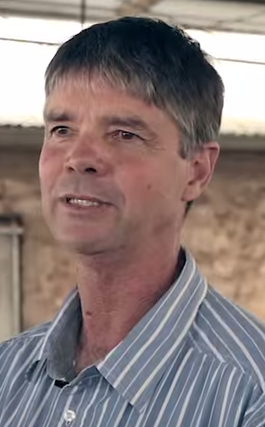 In this month’s edition of the Home Plate, we talk with 3rd generation sheep rancher Allan Piggott from Tailem Bend, South Australia.
In this month’s edition of the Home Plate, we talk with 3rd generation sheep rancher Allan Piggott from Tailem Bend, South Australia.
Aussie Beef & Lamb: How long have your family been ranching sheep?
Allan Piggott: My grandfather purchased this property as a bush block in the 1922. Extra land has been purchased in recent years so we now own over 5000 acres and sheep have always been a very important part of the business mix. Not only do we produce prime lambs for the domestic and export markets, but we are also a seedstock producer, which means that we breed rams for other prime lamb producers.
ABL: How has the business of husbandry changed over that time?
AP: There have been many changes over the 35 years that I have been involved with breeding lambs. We now have numerous labour saving devices that enable us to care for many more sheep safely and more efficiently. We are able to use the innovation and technology that is now available to make our Australian sheep and lamb industry more productive and more sustainable.
ABL: Are new generations coming into the business, too?
AP: We now have a large number of young sheep producers who are actively involved in our industry and excited and passionate about it. It’s a great sign for the future.
ABL: What should Americans know about lamb from Australia, from your ranch, and more generally?
AP: The Australian lamb that arrives in the USA has been grown in a clean and green environment by producers who are committed to providing the very best meat possible. Every plate of lamb is supported by decades of science and research to ensure that it meets the expectations of the consumer.
American consumers might not know that Australia has done decades of studies to find the gene markers for the best meat eating qualities. On our ranch we use this service and DNA test our young rams to ensure that they have the genetic traits to breed lambs that will produce the meat that we all enjoy. The result is a product that is nutritious, satisfying and delicious.
ABL: You recently hosted a group of hi-calibre chefs from the US to your farm - what do you think they responded to the most or were most impressed by?
AP: We had a long and interesting discussion about lamb production in Australia and I think they appreciated the information about the innovation and technology that is being utilised by Australian sheep farmers. During the discussion, we talked about the importance of providing a consistently good product to our consumers to ensure that they will always have a good meat eating experience. The flavour and tenderness of the meat is determined by the genetics, the production system used to grow the lamb and the methods used to process the lamb. As an industry we are continually working to ensure that we get this right.
ABL: American consumers eat about 1/20th of the lamb compared to their Aussie friends. If you could serve one lamb dish to convince a Yank to eat more lamb, what would it be?
AP: You can’t beat the Australian favourites of a lamb roast, rack of lamb or lamb chops on the BBQ. But equally as good (and a little bit different), my wife Sue makes a fantastic pulled lamb dish that has been slow cooked for up to 24 hours in Asian flavours.

